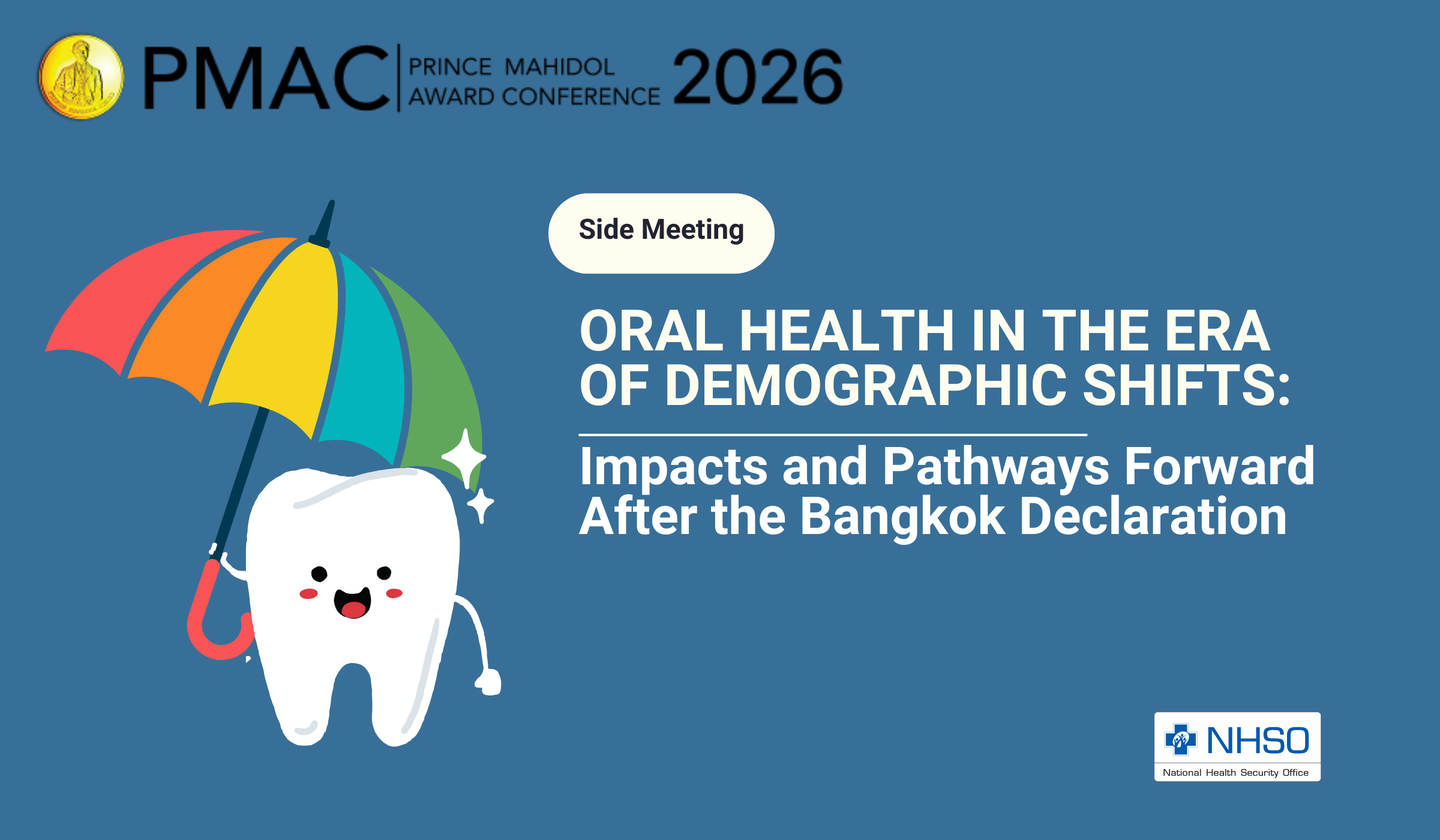Side Meetings
SMB203
Oral Health in the Era of Demographic Shifts: Impacts and Pathways Forward After the Bangkok Declaration
26
Jan
- National Health Security Office (NHSO)

Global demographic transitions—population ageing, declining fertility, youth bulges, migration, and rapid urbanization—are reshaping disease patterns, service needs, and fiscal sustainability. Oral health, often left behind in mainstream health agendas, is highly sensitive to these changes: ageing populations increase demand for prosthodontics and oral cancer care; youth bulges and sugar-dense diets drive dental caries; migration and informality widen inequities in access; and urbanization concentrates private services while leaving vulnerable urban-poor populations underserved. Rapid urban growth frequently outpaces city capacity to ensure equitable access, further undermining the ability of disadvantaged groups to obtain essential health—including oral health—services.
The World Health Organization has consistently highlighted the urgency of strengthening urban health systems, calling for reorientation toward primary health care, equity, and multisectoral coordination. At the same time, the Bangkok Declaration – “No Health Without Oral Health” (November 2024) elevated oral health to the global health agenda, aligning it with Universal Health Coverage (UHC) and primary care, and setting measurable targets for the 2025 UN High-Level Meeting on NCDs.
This side meeting will bridge these two streams—PMAC’s focus on demographic transition and the global oral health movement—to ensure oral health is no longer neglected. It will explore how demographic shifts shape oral health outcomes and services, and demonstrate how countries are innovating to build future-ready, equitable oral health systems.
- Map causal pathways: Analyze how demographic shifts (ageing, fertility and workforce changes, youth bulges, migration, rapid urbanization, inequity) affect oral health outcomes, determinants, and service needs, and their implications for financing, workforce, and delivery.
- Showcase adaptive models: Present innovative strategies such as contracting private dental clinics into public schemes, mobile and domiciliary oral care, life-course prevention (including fluoride interventions and fiscal sugar policies), and integrated urban primary health care.
- Equip leaders: Introduce demographic-lens planning for oral health policymakers and managers, enabling them to anticipate demographic challenges and design responsive, forward-looking policies.

